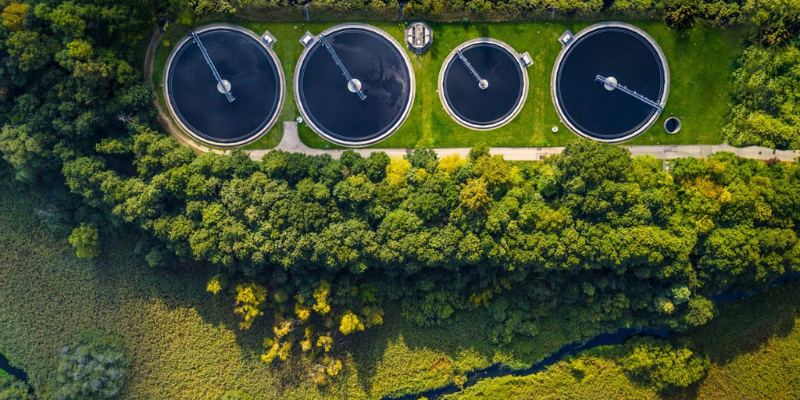Water, climate and collaboration: Navigating the global challenges beyond COP28
Alexis de Kerchove, Senior Director, Client Sustainability at Xylem.
Once-in-a-century floods hit Somalia as a record drought persists in the Amazon. The U.S. state of Georgia declares a disaster due to lack of rainfall while parts of Germany’s River Rhine remain closed to shipping due to heavy downpours. All in the weeks before COP28.
As we pass the halfway point for the Paris Agreement that paved the way for global climate action, our communities and economies cannot escape the reality that we are off track. With average global temperatures already hitting 1.8°C above pre-industrial levels, future projections are stark.
Water is the conduit for the most pronounced effects of global warming.
Day in, and day out, water managers are grappling with growing variability in supply as they work to create water-secure communities. Every drought and flood is devastating for people’s lives. As climate change intensifies, so will our water issues.
Innovation and investment in adaptation are undoubtedly necessary to build resilient water infrastructure. The danger is that we develop tunnel vision on this single objective and lose momentum in the water sector’s opportunity to mitigate climate change.

Water and wastewater infrastructure is a major GHG (greenhouse gas) contributor – making up approximately 2% of global GHG emissions.
We can change this. Assessments by Xylem and our partners show that water and wastewater utilities could dramatically reduce operational emissions by reducing electricity use, measuring, and mitigating process-related GHG emissions using existing, high-efficiency technologies, and limiting value chain emission by prioritizing suppliers that share the same net zero objectives.
Without mitigation, at some point in the not-too-distant future, we will run out of ways to adapt. That is why global convenings like COP28 are so important. They are an opportunity for frank, cross-sector, cross-border discussions about the critical next steps needed to course correct.
The dialogue taking place at the Water Pavilion in the coming weeks is a chance to collectively refocus on the challenge at hand: the water sector’s roadmap to mitigate and adapt.
Finding common cause
Our climate has little regard for our borders. Our water basins do not recognize the artificial boundaries that we have created as humans. We cannot afford to persist with an approach to climate change that prioritizes individual perspectives and focuses on immediate, local concerns.
Individual water utilities can make strides with net-zero targets, governments can develop emergency response protocols and businesses can look at ways to shore up supplies, but a siloed approach to modernizing water infrastructure is slowing us down.
No single sector, community, or government can solve our water challenges alone. To scale progress and modernize the world’s water systems to be more resilient, more efficient, and less carbon-intensive, we need a broad coalition of utilities, businesses, and governments to work the problem.
Today, we have around 400 GtCO2 left in our global carbon budget if we are to even stand a 50/50 chance of limiting the global temperature rise to 1.5°C. We are blowing through that budget far too quickly – research in Scientific American shows that Europe, Russia, and the U.S. have already exceeded their budgets.

While there are significant hurdles to overcome, COP28 is a powerful forum to spotlight and scale the innovative initiatives that are already underway around the world.
For instance, momentum is building in the European Parliament to establish an ambitious “Blue Deal” which would complement the objectives of the European Green Deal through the sustainable management of water supplies, while promoting a circular economy and delivering on decarbonization objectives. The bloc’s approach to decarbonizing and climate-proofing water supplies had the potential to be a sector-wide blueprint for achieving mitigation and adaptation, but it needs to go further than Europe.
More broadly, we have an opportunity to accelerate progress by ensuring that our successes and failures in the global north inform the modernization of water infrastructure in the global south.
By breaking out of silos, sharing best practices, and developing collective, holistic solutions, we can help developing countries leapfrog to more resilient, sustainable systems.
We need to rethink how we manage water. For example, conventional activated sludge treatment may depollute water, but it will not protect the environment. Instead, it releases nitrous oxide, which has a global warming potential 300 times higher than carbon dioxide, which has a slow and detrimental impact on the atmosphere.
Individual responsibility, collective action
The private sector is integral to this collective action – and we must step up.
As businesses and experts in our fields, we are accountable and responsible for advising and accelerating change across our value chain, particularly suppliers, customers, and governments. We need to share knowledge, collaborate in building strategies, and codevelop innovative solutions to fill the technology, operation, and business gaps that limit our sectors’ progress in climate mitigation and adaptation. Events like COP28 are another opportunity for us to come to the table with an openness to collaboration and creative partnerships that can advance pragmatic solutions to both mitigate and adapt to climate change.

These solutions must be backed by funding to generate the scale of transformation required. While water is an essential component of climate action, it receives less than 3% of all climate finance.
Policymakers have an opportunity to accelerate progress by shaping funding programs that do more than support emissions reductions or secure local supplies. Creating sustainable communities requires us to build a circular economy that eliminates or sequesters carbon and reuses water alongside the energy and nutrients recovered from the water cycle.
For us at Xylem, our role is also to act as a trusted ally to utilities and businesses in the climate fight.
Our customers are our most fundamental partners in addressing the world’s water challenges, and we’re committed to investing in innovative technologies that can support mitigation and adaptation efforts.
From grass-roots innovation to global impact
We see real cause for optimism in the work our utility and industrial customers are doing on the ground. Innovative approaches are already lighting a path to net zero, and with ongoing collaboration and innovation, the industry can move further, and faster.
To take stock of where the industry now stands in the race to zero, we spoke to innovative utility leaders from across the globe, north and south, to discuss how they are approaching climate action.
Each contributor exemplifies the advantages of a broad, ambitious approach that is about more than carbon or adaptation. From tackling wastewater process emissions to managing the water-energy nexus with renewables, their efforts are plotting a path towards a more sustainable future.
These efforts need to be complemented by concerted, cohesive action at national and international scales.
By acting together, we can adapt to our changing climate while getting back on track to avoid the worst of global warming.
Learn more about the race to net zero
Discover the strategies that utilities can use to deliver better sustainability and business outcomes.

